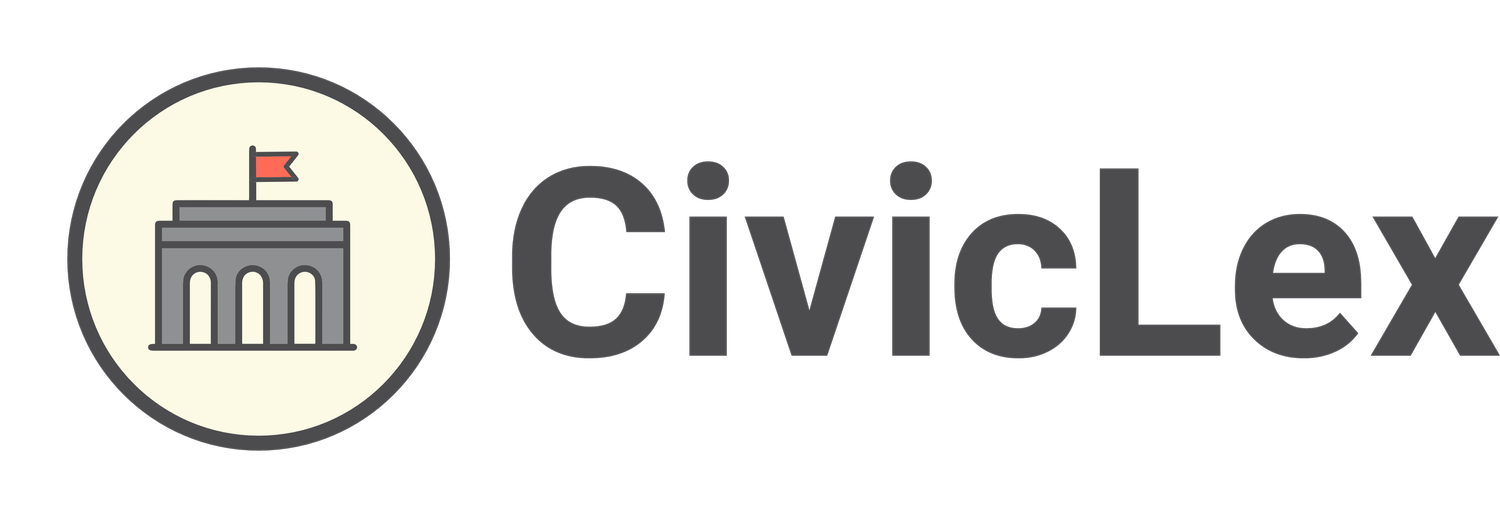
Lexington’s City
Budget
What is the City Budget?
The city budget is a financial document that helps guide how local government spends money and estimates how much in taxes and other money the city will receive in a given year. In the early spring of every year, the Mayor proposes a budget that reflects their priorities and the requests of their staff. Council then makes changes to that budget to reflect their priorities.
There are two big things to know about the budget:
In many ways, the city’s budget in an expression of the city’s values. Accomplishing any policy outcome costs money - between staff time and other expenses. So, what the city chooses to invest money into can help you understand which issues the city values more and less.
At the same time, the budget doesn’t typically change in major ways from year-to-year. There are a few reasons for this. One is that some rules dictate how money must be allocated. Another is that the city sometimes makes multi-year funding commitments to projects that take a long time. But the biggest reason is that a large part of the city budget is city staff. These staff are hired in departments working on specific issues, and so large swings in the budget would likely require the firing of staff in one place and hiring in another.
The city cannot spend any money unless it is planned for in the budget. Throughout the year, the city makes frequent budget amendments as they are needed to ensure local government can be responsive to what is needed.
How can you get involved?
Great question! The budget process is some of the most important work that the City of Lexington does, and it’s important to make your voice heard throughout. The best time for residents to get involved in the budget process is in the late winter and early spring of each year. You can see that in the timeline below.
Stay up on the budget process - Stay up on what is happening with the city budget through CivicLex.
Talk to your Councilmembers - Make sure your Councilmembers know about your priorities for the city budget. When you reach out, let them know that you understand the complicated nature of the budget, but want to advocate for your priorities.
Attend a budget workshop - Keep an eye on our events calendar or our Facebook page for any workshops on the city budget. In addition to learning more about the budget at our workshops, we regularly have representatives from Council and the city’s Department of Finance that you can talk to about your priorities.
Check out our budget database - CivicLex creates a budget database every year, to help explore what exactly is being funded in more detail. The database is open to the public and accessible here. This database is for the currently adopted budget.
Download our Budget Guide - Take a look at our Guide to the Mayor’s Proposed Budget, which explains the budget in a simple, straightforward way.
What’s in this year’s budget?
Use CivicLex’s Guide to the Mayor’s Proposed FY24 Budget to better understand this year’s LFUCG budget. We hope to have a new version of this budget guide for the current adopted budget posted soon.
What is the LFUCG budget?
A city budget is a document that shows all of the money that the city receives and spends in a given year. Lexington’s budget does not go by the calendar year. Each budget describes a Fiscal Year, which runs from July 1 to the end of June in the following year.
The money the city receives is called Revenue, and the revenue section of the budget gives details about how much money the city receives from each revenue source. Appropriations are what the city spends its revenue on. This makes up the majority of the budget document itself. Any item that the city wants to spend money on that is not included in the budget requires a budget amendment from council, which requires a supermajority to pass.
The General Services District Fund encompasses most of the basic services provided to residents. This part of the budget is the most flexible from year to year. Restricted Funds are other funds in the LFUCG budget, aside from the General Services District Fund. These funds are restricted for specific uses as designated by their charter, and have specific revenue (income) streams.
How is the budget created?
Step One: Departmental & Division Requests
January - February
Divisions and Departments within city government file requests for the next year’s appropriations with the Mayor’s office. These requests are usually based on the previous fiscal year’s budget, but also include requests for any new or expanded work.
Step Two: Mayor’s Proposed Budget Address
March - April
Based on the Division and Departmental requests, the Mayor and staff put together a draft of the budget. This draft includes any priority projects for the Mayor’s Office. It is then presented to council in a public session, usually accompanied by a televised speech on GTV3.
Step Three: Link Sessions
April - May
After the Mayor’s proposed budget is presented, Urban County Council members meet with Divisions and Departments to review their appropriations included in the budget. These happen in what are called “Links” that consist of groups of 3 council members assigned to the 5 different Division/Department groups. Link meetings are open to the public.
Step Four: Committee of the Whole & Public Comment
May - June
Once the link meetings are completed, the Council meets in what is called the “Committee of the Whole”. During this public meeting, the council Links present proposed changes, the Mayor’s Office makes late requests, Council members propose their own additions, and the budget goes up for Public Comment.
Step Five: First and Second Readings
June
Once the Committee of the Whole has happened, the budget is not likely to change, and goes for its Readings before Council. The budget is presented and read to the Council in two Council Meetings, and is then voted upon for passage.
What else do I need to know?
The budget is a complex document, and there are a lot of different rules and regulations surrounding how city finances work. We’re building a rolling list of helpful knowledge you may want to know below.
Where does Lexington’s revenue come from?
LFUCG’s number one source of revenue is Licenses and Fees, which includes permits, vehicle registration, and most taxes. Ad Valorem Taxes, or property taxes, are the next biggest source of revenue, followed by one time funds and income from services provided.
Inside Licenses and Fees, Payroll Withholding is the single biggest source of income for the city, and is 56% of general fund revenue. The top five sources of payroll revenue in Lexington are the University of Kentucky, Fayette County Public Schools, Baptist Health, LFUCG, and Amazon.
After Payroll Withholding, Net Profit Taxes are the second largest revenue stream. And contribute 11% of the General Fund. Many of the largest employers in Lexington are nonprofits, and do not have to pay net profit taxes.
Ad Valorem Taxes, or property taxes, come in at about $28 million a year. However, LFUCG only keeps about $10 million of that - the rest goes to Lextran, FCPS, and the Lexington Public Library. In the 90s, the Library sued LFUCG and received a judgement to receive at least 5% of all property tax collections.
What is a Fund Balance?
Fund Balance is a term used for money leftover from the previous Fiscal Year’s Budget.
Leftover revenue (or Net Revenue) happens when the city either raises more revenue than expected, spends less than expected, or a combination of the two.
This funding can then either be saved or spent by Council in the next Fiscal Year.
When it’s spent in the next fiscal year, it is transferred and then spent.
This can make it appear that the city is running a deficit, when in reality it is just spending money raised in a different year.
Past CivicLex Budget Resources
CivicLex’s FY 22/23 Budget Page
Use this page to understand the FY 22/23 LFUCG Budget. It contains our Guide to the Mayor’s Proposed Budget, our Budget Workshop Presentation, updates about the budget process, and more.
CivicLex’s FY 21/22 Budget Guide
Use this guide to learn more about LFUCG’s budget and what it means for the city. You can see a breakdown of the budget by sector, learn how to read the raw budget document, and find contacts for topic - specific questions. This guide is updated with each annual budget.
CivicLex’s FY 21/22 Budget Database
Access CivicLex’s searchable and filterable database of the top line items in the city budget using the platform Airtable. This is what we use to build our budget guide.
LFUCG’s FY 21/22 Raw Budget Document
Read through the entire LFUCG adapted budget, in its 529 page glory!
CivicLex’s FY20/21 Sectoral Budget Guide
Download our guide to the city budget, which teaches you how to read the budget, how it gets made, and gives you a sector-by-sector look at where tax revenue goes.
CivicLex’s FY 20/21 Budget Database
Access CivicLex’s searchable and filterable database of the top line items in the city budget using the platform Airtable. This is what we use to build our budget guide.
LFUCG’s FY20/21 City Budget Raw Document
Access the city’s budget documents going all the way back to 2007. The documents provide a comprehensive - if overwhelming - view of the city’s finances and budget.



